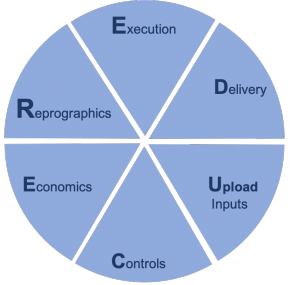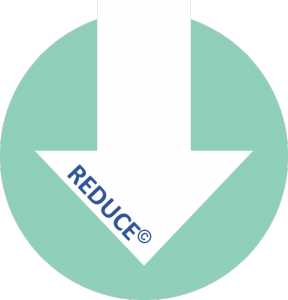
Does the print cost of your in-store POS leave a sizeable dent in your overall marketing budget? For many retailers, the cost of this essential but expensive media is much higher than they would like. It is often just seen part and parcel of being a bricks & mortar retailer. Until speaking to us, some believe that reducing these costs is difficult or almost impossible.
What makes controlling the cost of POS print different from other types of print? In our experience, these are the main ones:
- Physical size of print
- High levels of variation
- Retail is reactive – short leadtimes
- High cost of packaging and distribution
- Propensity for requirements to fall outside a pricing structure
Let’s look at some of these in more detail.
Physical size
POS is large and covers vast surface areas of a store estate. If you were to calculate the surface area installed into your stores you could well be in for a surprise.
Imagine your campaign includes 7,000 AO posters. If these were to be laid side by side they would cover a football pitch. Consider the amount of board/paper, the physical printing and then handling, packaging and distributing to each store you will begin to see the scale of the work.
It would be unthinkable to have little or no cost control of such an expensive project and yet this is not uncommon.
Variation
Most stores have set sizes of POS due to the ‘furniture’ that is in situ which defines many of the print sizes – at least in 2 dimensions.
However, there are plenty of other variables that come into the equation such as substrate, thickness, coatings, die-cut shapes, items that require assembly, metallic foiling, mounting & hanging mechanisms to name a few.
Quantities often vary considerably due to different requirements for each store, store layouts and ranges changing periodically and so even if you had a detailed database of what each store needs this can quickly become out of date.
Reactive campaigns
Each time you need to produce a campaign quickly then you face the risk of ‘off meter’ production costs as your supplier needs to re-plan their factory, perhaps lay on extra shifts, temporary labour to pack the mountain of items and have to arrange faster and more expensive transport. Due to the scale of POS print, these costs can escalate very quickly.
Worse still, we frequently find that clients don’t receive the price from the print supplier until after the job has been printed.
Controlling your costs
A good place to start is to focus on the main cost components of the end-to-end creation of POS. In simple terms these are typically:
- Design, Artwork and Reprographics
- The pricing structure that you have agreed with your print suppliers
- Distribution costs
- The information, data and artwork your business feeds into the process
- Print production including specifications, quantities, timings.
Significant cost savings can be achieved if these areas are understood, quantified and controlled.
By adopting this methodology we have helped Retailers reduce their overall POS costs by 15% to 25% and, due to the high costs involved, the ROI has been impressive.

The REDUCE©methodology is a proven way of breaking down the cost drivers into the component parts. It addresses the costs in two ways; simplifying the way the retailer organises its POS and secondly, by creating a pricing structure that ensures the supplier is always working within defined pricing structure. Do this well and you can avoid costs caused by inefficiencies and minimise those biting extra costs when the unexpected happens.
The commercial pricing structure is the critical component of any supplier contract and it is must be constructed to suit the individual needs of each retailer. You will almost certainly need specialist support to do this well and avoid your costs creeping up.
The REDUCE methodology can be deployed as a stand-alone programme for marketing teams or can be used as support to the retailer’s existing Procurement teams to ensure these critical specialist areas are well-covered.

